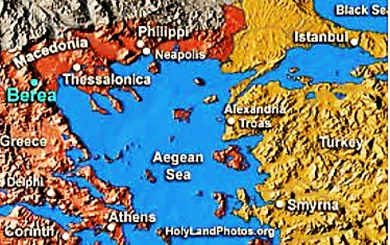 |
 |
Ancient maps depicting Bible events can be incredibly valuable tools for studying the Bible and enhancing learning and teaching in several ways:
Benefits for Studying the Bible:
-
Geographical Context:
-
Ancient maps provide geographical context, helping to visualize the locations and distances between biblical events and places.
-
Understanding the geography of the Holy Land and surrounding regions can deepen comprehension of biblical narratives.
-
Historical Insight:
-
Maps can illustrate historical changes in territories, political boundaries, and settlement patterns.
-
They offer insights into the historical context of biblical events, including the movements of peoples and the rise and fall of empires.
-
Enhanced Understanding:
-
Visualizing the routes taken by biblical figures (e.g., the Exodus of the Israelites, Paul’s missionary journeys) can enhance understanding of the challenges and significance of their journeys.
-
Maps can clarify the strategic importance of certain locations mentioned in the Bible.
Learning and Teaching Strategies:
-
Visual Aids:
-
Maps serve as effective visual aids in teaching, helping students and congregants to better grasp the spatial and historical dimensions of biblical stories.
-
They can be used in sermons, Bible studies, and classroom settings to illustrate key points.
-
Interactive Learning:
-
Interactive map tools and digital resources allow for engaging, hands-on learning experiences.
-
Students can explore maps independently, locating places and tracing routes mentioned in biblical texts.
-
Cultural Appreciation:
-
Comparative Analysis:
-
Comparing ancient maps with modern maps can reveal changes over time and prompt discussions on historical and archaeological findings.
-
Such analysis can lead to a more nuanced understanding of biblical history and its ongoing relevance.
-
Enhanced Retention:
Conclusion:
Incorporating ancient maps into Bible study and teaching can significantly enrich the learning experience, providing a deeper understanding of the geographical, historical, and cultural context of biblical events. They can serve as powerful tools for visualization, engagement, and comparative analysis.
|